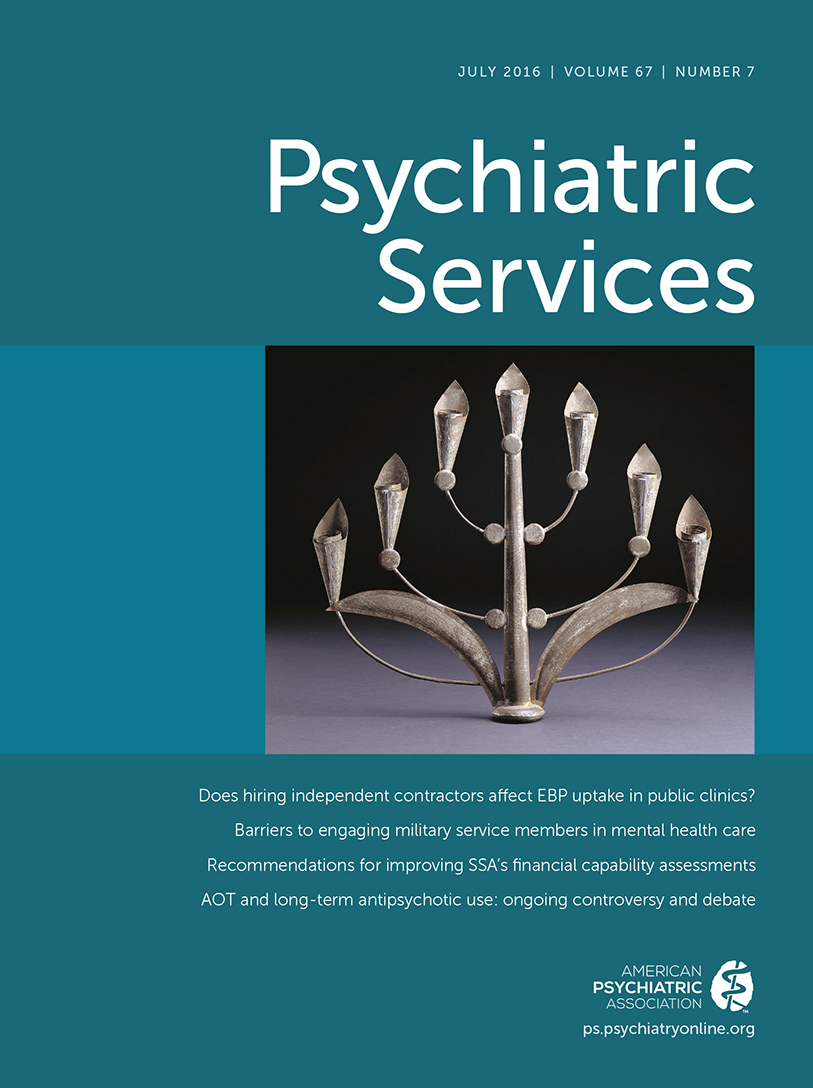Documenting AOT Implementation: Misinformed Informants? In Reply
TO THE EDITOR: We certainly agree with Dr. Geller and Mr. Stettin’s concern for reliable data on AOT implementation, which, as they state, can be challenging to obtain. However, their specific criticisms are a miscategorization of our data. We acknowledge that Tables 2 and 3 in our article could be wrongly interpreted if not read carefully. On page 2, we stated that “In 14 of the 37 states we were able to contact, implementation of the statutory program appeared to be limited or was not well documented.” In addition, our original title for Table 3 was “States with new or relatively inactive AOT programs or limited documentation”; the original title noted the limited documentation as well as the inactivity. However, this detail was omitted in the editing process, and we are pleased to be able to correct this omission now. The 17 states listed in Table 3 were not all inactive: they had either relatively inactive AOT programs or possibly active programs for which informants were not able to provide data or, in three cases, were implementing new statutes and had not yet had the opportunity to gather data. These specific differences in AOT status are shown in the table itself.
In the specific instances cited, New Jersey reported having an active program but was in the process of implementing a new statute when we made our contacts. The same is true of Florida. Illinois is not identified as “a statewide success” but as an active program, although with a low number of participants for such a populous state (170). New York has been a national leader in AOT implementation; nevertheless, our informants indicated that upstate counties were much less active than the metropolitan areas. Nevada is shown in the table as having implementation limited to one county, as Dr. Geller and Mr. Stettin note. We think that readers will not err in assuming that the New York and Nevada programs are similar in scope, when readers note the relative number of participants listed in the table (3,147 versus 70). Finally, we are aware that there are active single-county programs in Michigan, Ohio, and Texas, but, as shown in Table 3, we were unable to obtain good data on numbers enrolled or other specific information about implementation.
We believe that we were honest about the methods and limitations of the project and presented our findings without overstating their significance or thoroughness. We presented our data not as the final word on AOT implementation but as an informed statement about the commonalities and variances of the active programs we identified across the country—and, in particular, about differences in enrollment mechanisms. In addition, our work highlighted the lack of reliable, accurate data that are needed fully to assess the effectiveness of programs such as AOT in many states. Finally, as Dr. Geller and Mr. Stettin noted in their own report (1), we found implementation in many states and counties to be “occasional, half-hearted or nonexistent.”
We would welcome additional information from state and county programs that would enable us to develop a more complete report.
1 : Mental Health Commitment Laws: A Survey of the States. Arlington, Va, Treatment Advocacy Center, Feb 2014. Available at TACReports.org/state-survey. Accessed April 14, 2016Google Scholar



